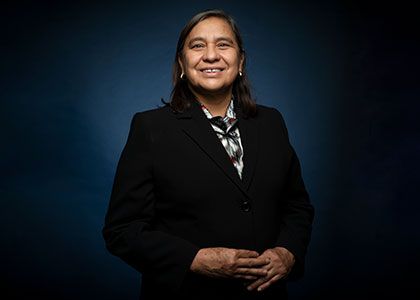La pregunta de si pudo haber habido una mujer constituyente en 1916-1917 tiene como respuesta un contundente sí.
Hermila Galindo es la mujer que pudo haber estado en Querétaro ocupando legítimamente un espacio como constituyente. Ella estaba muy cerca de Carranza y tenía toda su confianza. Pudo ser una de los 14 diputados que tuvo el Distrito Federal, donde residía, o una de los 7 de Durango, su tierra natal.
Los constituyentes se reunieron en noviembre de 1916. Ese mismo año, en enero, Hermila Galindo había sido clave para la organización el primer Congreso Feminista en México que se celebró en Mérida Yucatán. Ahí, un grupo nutrido de mujeres, en su mayoría maestras, había llenado el teatro Peón Contreras por varios días para discutir los derechos de las mujeres. Básicamente cuatro: el derecho a la educación, el derecho a la salud, el derecho al trabajo y el derecho al voto. Hermila Galindo no pudo asistir, pero envió una ponencia por escrito.
Así, a pesar de la gran efervescencia que tenía el tema de la participación política de las mujeres en 1916, ninguna estuvo entre las personas que se eligieron para ser Constituyentes en los 214 distritos en que se dividió el país. En 29 de ellos no fue posible que hubiera elecciones porque no se había logrado la pacificación.
Hermila Galindo no fue constituyente, pero logró estar muy cerca de los hombres que redactaron la Constitución al haberse integrado al grupo que se formó para apoyarlos en sus trabajos.
Todo indica que el cálculo de Hermila fue que iba a resultar benéfico para ella estar cerca del Constituyente y, de esa manera, influir en los temas que más le importaban y ya con la Constitución promulgada, iba a poder participar en las primeras elecciones para ser diputada por el distrito donde residía.
En materia laboral, la nueva Constitución retomó los postulados de las luchas obreras en las que Hermila Galindo había profundizado con la lectura de las publicaciones de Clara Zetkin y Alexandra Kollontai.
Respecto del derecho al voto, Hermila estaba convencida de que no había que otorgar expresamente el voto a la mujer, sino solo interpretar la Constitución en el sentido de que, donde decía mexicanos, debía entenderse que quedábamos comprendidos hombres y mujeres.
Tan estaba convencida de ello, que se registró para contender en las primeras elecciones que se celebraron en 1917 y que hubo algunas mujeres que votaron por ella, como lo hace constar Rosa María Valles en su obra Sol de Libertad. Hermila no tuvo los votos suficientes para ganar la elección, pero su interpretación de inclusión la compartían más personas. De otro modo no hubieran sido posible las reformas a las constituciones de Yucatán, Chiapas y San Luis Potosí que posibilitaron la elección de las primeras diputadas locales en 1920 y 1926.
Este argumento de que las mujeres estábamos incluidas en el “mexicanos” del artículo 34, la reiteró Margarita Robles de Mendoza, otra de las sufragistas relevantes de la primera época, en una entrevista a Emilio Portes Gil, entonces Presidente de México, en Palacio Nacional y que ella narra en sus escritos.
El derecho al voto de las mujeres se estaba reconociendo y otorgando en distintos países del mundo desde finales del siglo XIX y en las primeras décadas del XX. México iba acompañando los movimientos internacionales y trazando su propia ruta, pero hay que dejar constancia que el primer intento fue la apuesta por la interpretación gramatical apelando a la regla de la supuesta inclusión de lo femenino en el genérico masculino.
La reforma de inclusión expresa se logró muy tarde, hasta 1953, a nivel nacional. Hermila falleció un año después, en agosto de 1954.
Hermila Galindo ha tenido infinidad de reconocimientos póstumos. Su nombre fue escrito con letras de oro en la Cámara de Diputados en la LXXIV legislatura y hoy su rostro aparece en los billetes de mil pesos.
Hermila Galindo pudo ser electa Constituyente en 16; méritos no le faltaban, pero… era mujer.
Las opiniones expresadas son responsabilidad de sus autoras y son absolutamente independientes a la postura y línea editorial de Opinión 51.
Más de 150 opiniones a través de 100 columnistas te esperan por menos de un libro al mes. Suscríbete a Opinión 51.






Comments ()